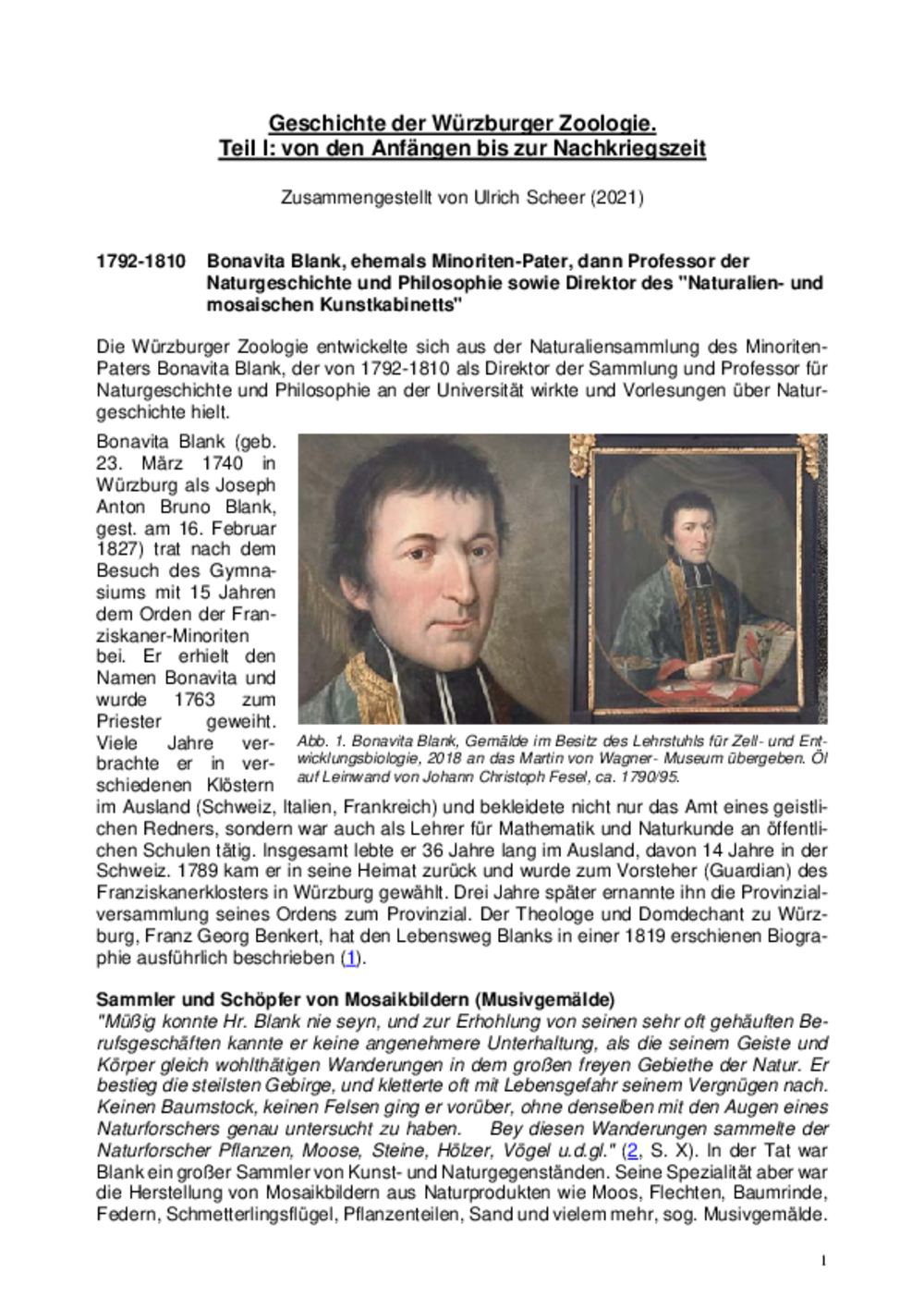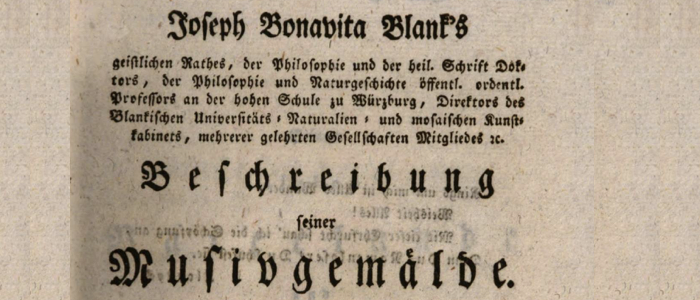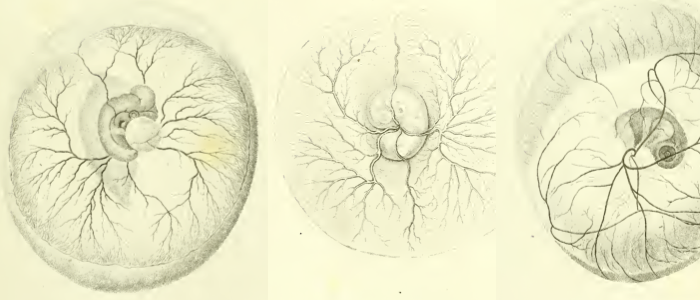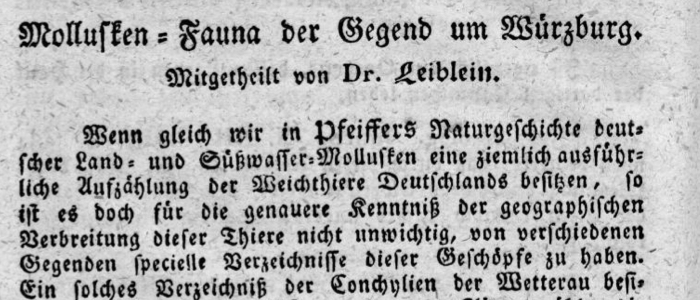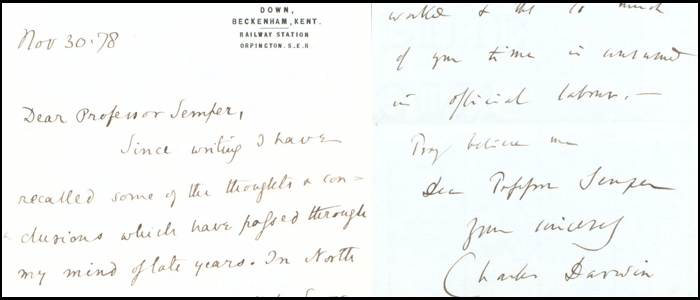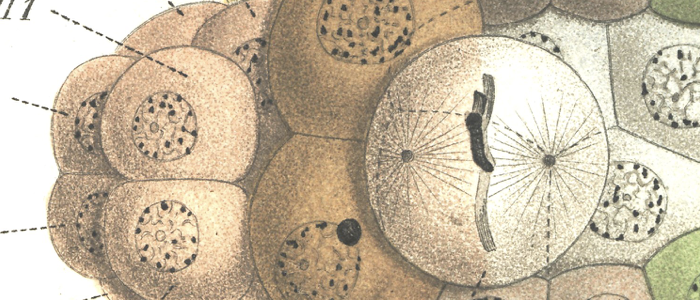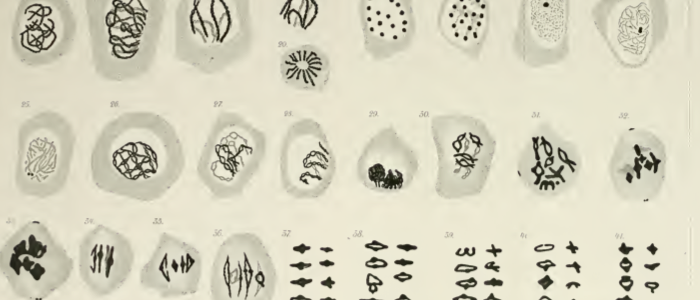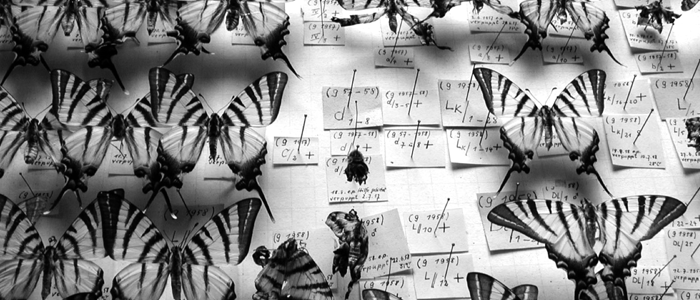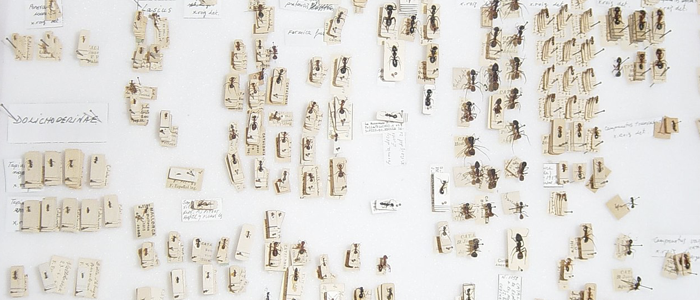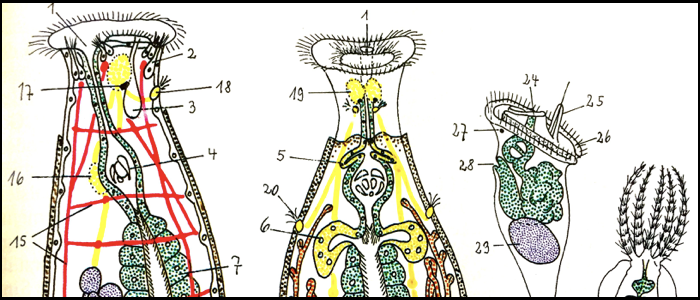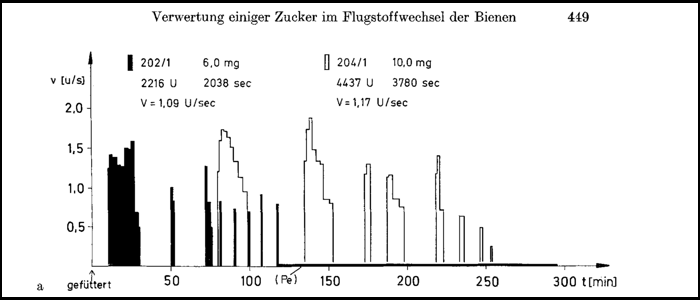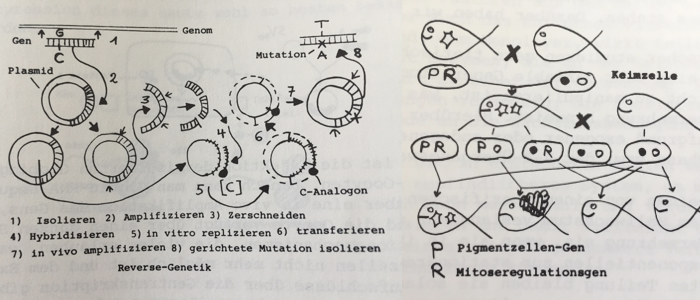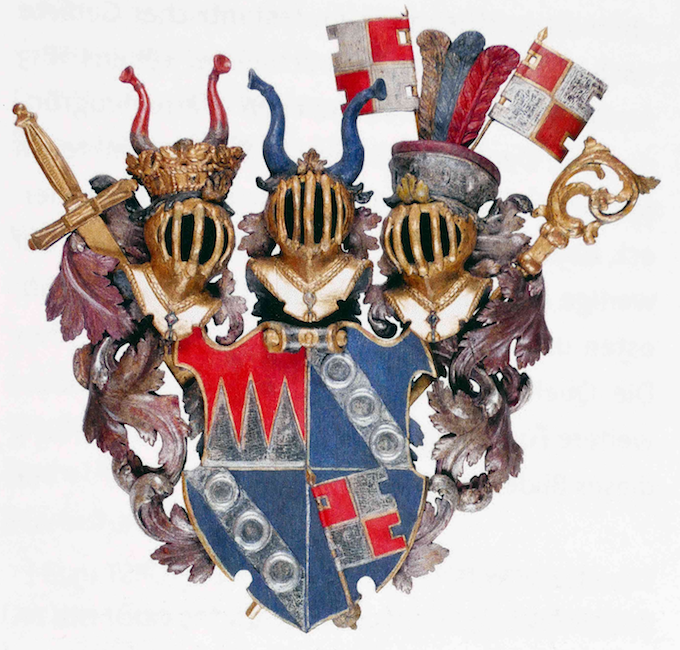History
More than 225 years of zoological research in Würzburg
1792-1810 Bonavita Blank
Bonavita Blank (Joseph Anton Bruno Blank, (1740-1827), Minorite provincial, professor of natural history (mineralogy, zoology) and philosophy.
1792 Acquisition of Bonavita Blank’s “Kabinett der Kunsthistorie” featuring more than 120 mosaic paintings (he called them “Musivgemälde”) made of feathers, moss, cork and other natural materials. Today the last remaining mosaic (“Federbild”) is on display in the Martin-von-Wagner Museum, University of Würzburg.
1803 Acquisition of Bonavita Blank’s “Naturalienkabinett” (mineralogy, zoology). The art and natural history collections are displayed jointly in the former auditorium of the university (now old university, Domerschulstrasse) and become a main attraction far beyond Würzburg.2018 The historic portrait of Bonavita Blank, which had been at the Zoological Institute for about 200 years, has been moved to the Martin von Wagner Museum, where it is prominently presented in the entrance hall.
On August 28th, the director of the museum, Prof. Damian Dombrowski, collects the painting from Markus Engstler.
1810-1829 Ambrosius Rau
Ambrosius Rau (1784-1830), professor of natural history (zoology, botany, mineralogy, forest sciences). He witnesses the fundamental study on chicken embryogenesis conducted 1817 in Sickershausen by Ignaz Döllinger, Christian Eduard D’Alton and Heinrich Pander. Their large-scale experiments result in the germ-layer concept and thus, lay the foundation for modern embryology.
Ambrosius Rau also was a great botanist and his famous book on roses "Enumeratio Rosarum Circa Wirceburgum Et Paios Adiacentes Sponte Crescentium" is published in 1816.
1830-1869 Valentin Leiblein
Valentin Leiblein (1799-1869) is the chair of zoology. His taxonomic work is exceptional. He transforms Bonavita Blank's "Naturalienkabinett" into a contemporary natural history museum and arranges the exhibits according to modern taxonomic criteria. The collection expands through purchases and donations (Leiblein 1839). Between 1840 and 1856 he also serves as director of the botanical garden and lectures botany.
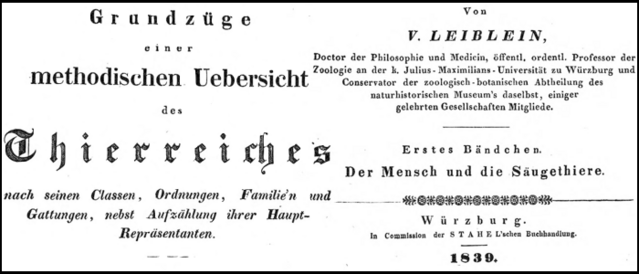
In 1830, the professorship of natural history is split into a chair of general natural history (“Allgemeine Naturgeschichte”) with focus on mineralogy and geology, and the chair of zoology.
1869-1893 Carl Semper
Carl Semper (1832-1883) follows Leiblein as professor of zoology and anatomy. He is well recognized for his extended expeditions to the Phillipines and Palau. Semper is also acknowledged for his humane and even-handed attitude toward indigenous cultures. He founds the “Zoologisch-Zootomisches Institut”, the name "zootomisch" is coined to contrast medical anatomy. Ironically enough, his institute receives large parts of the anatomical collection from the faculty of medicine. Between 1877 and 1882, Semper corresponds with Charles Darwin, praising Darwin's work. At the same time he ignites a controversy that becomes famous as the "coral reef controversy".
1887-1893 The new building “Zoologisch-Zootomisches Institut” is constructed in the Pleicherwall (now Röntgenring). The zoological collection is moved into the new building. In 1906 the adjunct “Zootomisch” is omitted.
Read John Beard's obituary on Carl Semper published in Nature.
1893-1915 Theodor Boveri
In 1893, Theodor Boveri (1862-1915) is appointed as Professor of Zoology and director of the Zoological Institute at the University of Würzburg. Despite his young age of just 30 years, Boveri has already made a number of seminal and famous observations and established several basic facts about centrosomes, a term introduced by him in 1887, the year that marks the naissance of centrosome research.
It is the era before modern genetics, but Boveri realises that cancer cells, like his deformed sea urchin cells, have abnormal chromosome combinations; whatever caused cancer, he hypothesizes, has something to do with chromosomes. In this sense, Boveri can be celebrated for discovering the "origins" of cancer.
Tragically, in Boveri's beginning is also his end. In 1915, he falls seriously ill with repetitive fevers and colics. He has become infected with his model organism, the Ascaris parasite, and suffers badly. Close to death, he writes to a friend: "It is mean when the beasts you have worked on, now starts working on you."
1916-1948 Waldemar Schleip
Waldemar Schleip (1879-1948) follows Boveri and continues his fundamental work on cell and developmental biology.
On March 16th, 1945, the “Zoologisches Institut” is destroyed during the bombardment of Würzburg. A plethora of documents and the precious collections and samples are lost. Also, Boveri’s giant salamander did not survive – more than one meter long and many decades old.
1949-1951 Andreas Penner and 1951-1952 Theodor A. Wohlfahrt
Andreas Penner and Theodor A. Wohlfahrt (1907-2006), a world-renowned specialist for butterflies, serve as interim chairmen. Wohlfahrt is a student of Karl von Frisch. In 1937, due to his liberal attitude, he is not granted tenure in Munich, but instead is sent by the Reichsministerium to Würzburg. From 1954-1981 he works with Walter Forster on the standard reference "Die Schmetterlinge Mitteleuropas" (Butterflies of Central Europe). A very personal obituary on Theodor A. Wohlfahrt has been written by Dieter Mahsberg.
1950-1975 Karl Gößwald (Zoo III)
In 1950, the new “Institut für Angewandte Zoologie” (Institute of Applied Zoology) is founded and headed by extraordinary professor Karl Gößwald (1907-1996). In 1966, he is appointed full professor and chair. In 1975, the “Institut für Angewandte Zoologie” becomes "Lehrstuhl für Zoologie III", chair of zoology III.
1976-2008 Karl Eduard Linsenmair
since 2010 Ingolf Steffan-Dewenter
1953-1958 Hansjochem Autrum
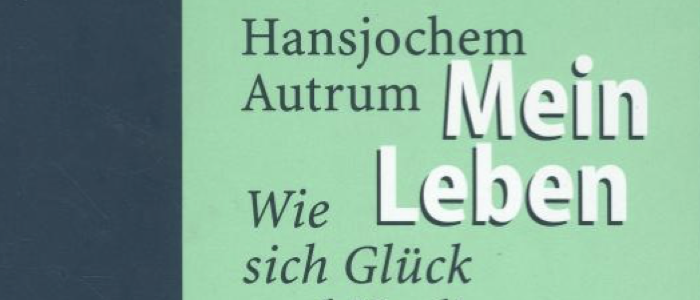
Hansjochem Autrum (1907-2003) establishes a center for comparative sensory physiology, which involves work on a remarkably broad range of topics. One of the big achievements of course is to provide mechanistic insights into color vision of bees, which involved the development of refined electrode pullers and amplifiers in order to be able to record from single visual cells. During his term, a new zoological auditorium is built.In 1958 he succeeds Karl von Frisch as Chair of Zoology in Munich.
1958-1975 Gerhard Krause
Gerhard Krause (1906-1991) continues the long tradition of developmental biology at the zoological institute. His holistic view on the mechanisms of biological development bases on experimental embryology, and a synthesis of ontogenesis and phylogeny. Gerhard Krauses lecture series "Entwicklungsbiologie und System" influenced generation of students. The essence is published as "Biogenetische Interphänotypen", unfortunately only in German language.
In 1982, Gerhard Krause and Martin Lindauer published a history of the Würzburg Zoology on the occasion of the 400th birthday of the University of Würzburg.
1966-1971 Herbert Heran (Zoo II)
In 1966 Herbert Heran (1920-1992) is appointed as first chairman of the newly founded Chair of Zoology II (Lehrstuhl Zoologie II). His research on the carbohydrate metabolism of honey bees layed the foundation for a bee focus in Wüzburg, which is still very successful today.
1973-1987 Martin Lindauer
1989-2004 Bert Hölldobler
since 2011 Wolfgang Rössler
1976-1982 Helmut Wilhelm Sauer (Zoo I)
Helmut Wilhelm Sauer (1936-2016) introduces an amazing new model system for developmental biology, the plasmodial slime mold Physarum polycephalum. With the advent of molecular genetic he takes biochemical and cellular developmental biology to new levels. Helmut Sauer's research focuses on the control of mitosis in Physarum, which develops into a syncytium with millions of nuclei synchronously dividing nuclei in one common cytoplasm.
1986-2007 Ulrich Scheer (Zoo I)
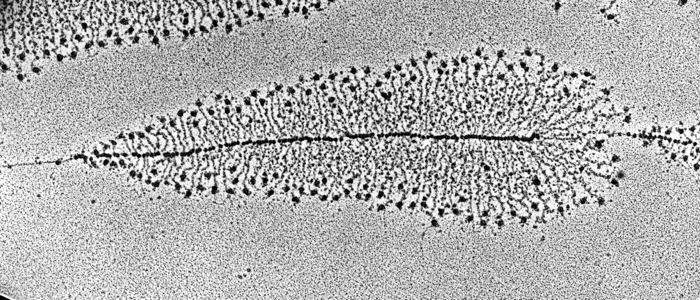
Following an interim phase from 1982-1986, in which Lothar Schneider deputised for the chair, Ulrich Scheer is appointed Chair of Zoology I, now also Chair of Cell and Developmental Biology. He studies the biology of the cell nucleus, using the giant nucleus (germinal vesicle) of amphibian oocytes as model system. Structural, functional and dynamic aspects of the nuclear envelope are unravelled. Early on, in 1984, he finds that actin is involved in transcriptional processes. More recent work is on how ribosome biogenesis is spatially organized and integrated into nucleolar structure. The move into the new Würzburg Biocenter falls in Ulrich Scheer's term.
1992 Biocentre and Theodor-Boveri-Institute
In 1992, the zoology chairs and the zoological collections move into the new Biocentre, and in 1993, the Zoological Institute fuses with other chairs of the biocentre to form the Theodor-Boveri-Institute
since 2009 Markus Engstler (Zoo I)
Markus Engstler is appointed Chair of Cell and Developmental Biology (Zoo I)
Unbekannter Künstler Fürstbischöfliches Wappen (aus dem Juliusspital?), um 1600, Holz, farbig gefasst, 74x76x11 cm.
Würzburg, Martin von Wagner Museum der Universität Würzburg, lnv. Z 849 (Eigentümer: Zell- und Entwicklungsbiologie, Biozentrum der Universität Würzburg)
Compiled by Ulrich Scheer and Markus Engstler







